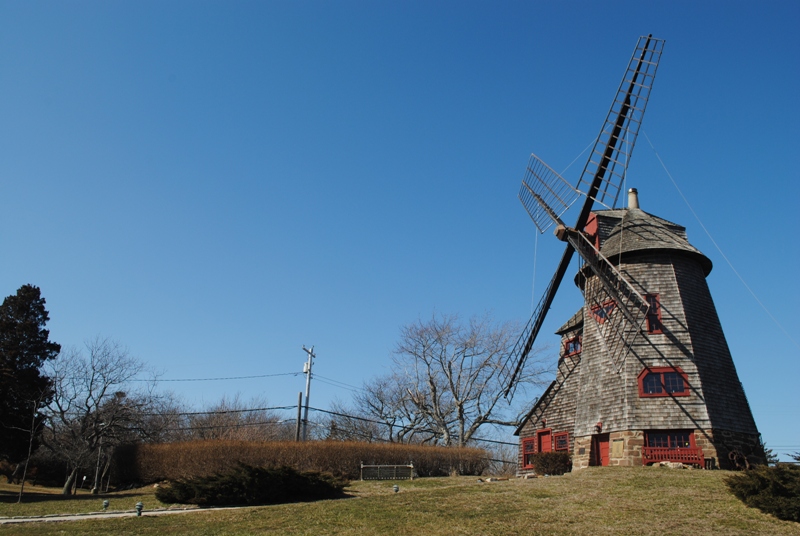DISPATCH - JULY 13, 2013 (12:30 p.m.)
SOUTHAMPTON, NY-
A new Literary Landmark joins the Hamptons. The historic windmill located at Stony Brook Southampton has won designation as a Literary Landmark from United for Libraries, formerly known as the American Library Association. Landmark status was granted to the windmill based on playwright Tennessee Williams (1911-1983) having lived there during the summer of 1957 while he was writing his experimental play, “The Day on Which a Man Dies.” The play was written in response to the death of his friend, the abstract expressionism painter Jackson Pollock, who had died in a car crash the summer before.
A dedication ceremony will be held at the windmill today (July 13) at 3:45 p.m. on the campus of Stony Brook Southampton. The ceremony includes the reading of a new one-act play, “At Stanley’s Place,” by MFA college faulty member Frederic Tuten of the Creative Writing and Literature Department.
The play cues to Williams's iconic play "A Streetcar Named Desire" through the play's main character - Stanley Kowalski. In addition to the characters of Stanley and Blanche DuBois from "Streetcar," characters from other major American plays populate the cast of Tuten's “At Stanley’s Place.”
Williams, a Pulitzer Prize winning playwright, lived in the windmill during the summer of 1957 when the windmill functioned as a cottage for summer rentals, according to Stony Brook Southampton. Plays by Williams that are now American classics include "A Streetcar Named Desire," "Cat on a Hot Tin Roof" and "The Glass Menagerie." Besides plays, Williams wrote short stories, poetry, novels, screenplays, and essays. His poetic realism continues to inspire writers, actors, directors and filmmakers, according to Stony Brook Southampton.
Earning the designation for the windmill wasn't easy. In September 2011, Stony Brook Southampton MFA in Theatre Director Nick Mangano began the application process after hearing that Williams had lived there. Mangano drafted the wording for the plaque that will be struck to identify the newly minted 300-year-old landmark and presented today.
The windmill was originally located on what is now Hill Street in Southampton Village, NY. It was moved to its current location in 1890 to become part of what was then known as the Claflin estate. During that time, it served as a playhouse for the Claflins’ daughter Beatrice, according to “The College Windmill: An Affectionate History,” a booklet authored by Edward Glanz, the founding provost of Southampton College.
The property remained in the Claflin family until it was sold following World War II. It was then run as the Tucker Mill Inn, catering primarily to summer visitors. Long Island University purchased the property in 1963 and opened it as Southampton College. During the college’s early years, the windmill served as a meeting place for students and its top floor offered overnight accommodations to the school’s more prominent guests. The 82-acre campus was acquired by Stony Brook University and reopened as Stony Brook Southampton in fall 2007.
In 2012, Stony Brook University invested another $50,000 to replace the massive yoke, the shaft on which the windmill’s vanes, or sails, are mounted.
The windmill (and Stony Brook Southampton) are located at 239 Montauk Highway, Southampton, NY 11968. www.stonybrook.edu/southampton.
.
.
______________________________________
Copyright 2013 Hamptons Art Hub LLC. All rights reserved.

